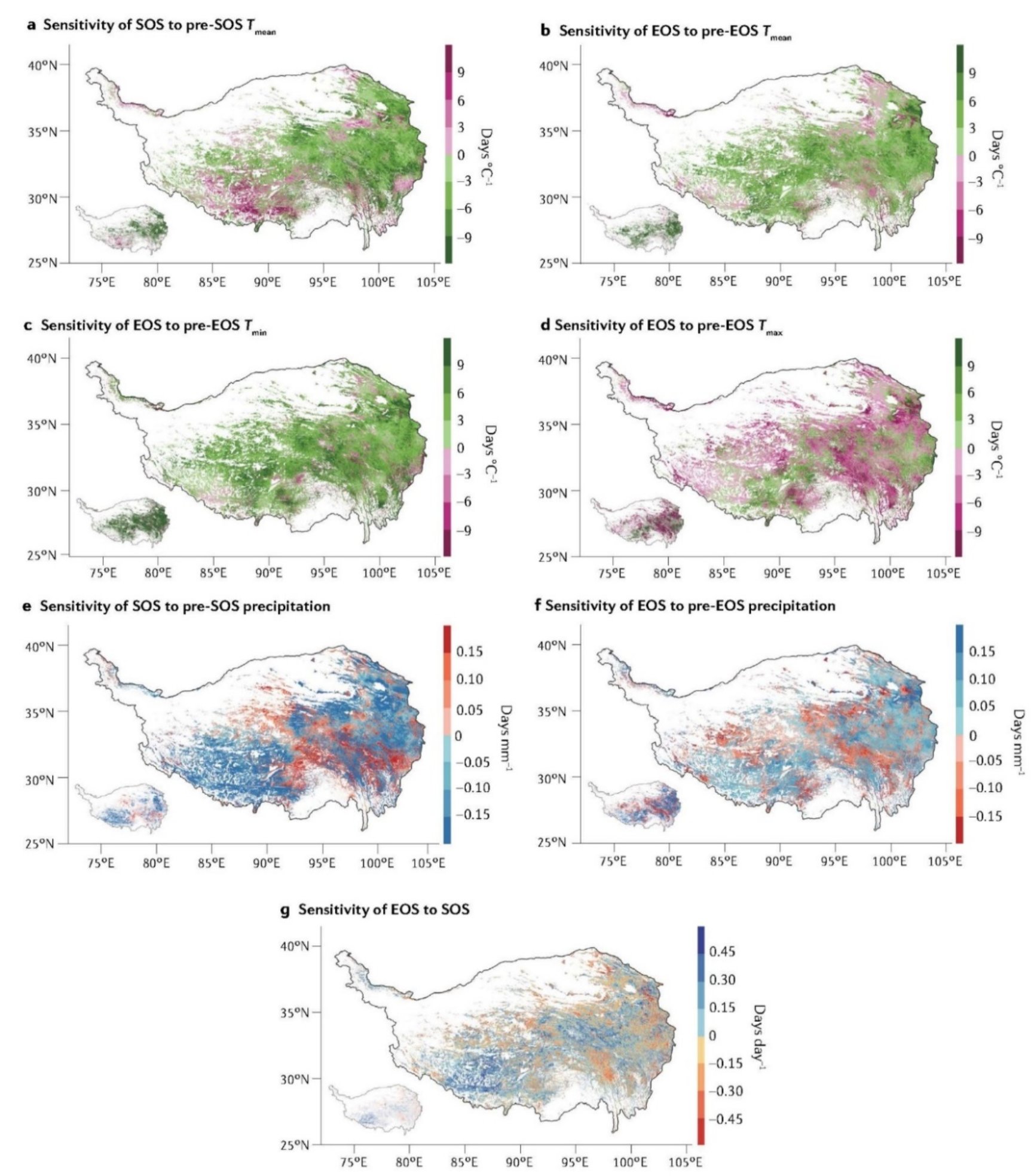Plant phenology changes and drivers on the Qinghai-Tibetan Plateau
SHEN Miaogen | Nature Reviews Earth & Environment
Plant phenology changes and drivers on the Qinghai-Tibetan Plateau
Miaogen Shen, Shiping Wang, Nan Jiang, Jianping Sun, Ruyin Cao, Xiaofang Ling, Bo Fang, Lei Zhang, Lihao Zhang, Xiyan Xu, Wangwang Lv, Baolin Li, Qingling Sun, Fandong Meng, Yuhao Jiang, Tsechoe Dorji, Yongshuo Fu, Amy Iler, Yann Vitasse, Heidi Steltzer, Zhenming Ji, Wenwu Zhao, Shilong Piao, Bojie Fu
Nature Reviews Earth & Environment
Published July 26 2022
https://doi.org/10.1038/s43017-022-00317-5
Abstract
Warming temperatures, shifting precipitation patterns and human activities on the Qinghai-Tibetan Plateau are impacting phenology, including advancing the start and delaying the end of the growing season. This Review examines the drivers, patterns and impacts of changing vegetation phenology across this region.
The ongoing phenological changes in vegetation on the Qinghai-Tibetan Plateau could modify land surface and atmospheric processes. In this Review, we summarize these changes, their drivers and the resulting impacts. The start of the growing season advanced by 9.4 +/- 2.2 days during 1982-1999 and 8.3 +/- 2.0 days over 2000-2020, and the end of season delayed by 8.2 +/- 1.9 days during 2000-2020. The main identified drivers of these changes are warming temperatures and increasing precipitation, but their impacts vary substantially across the Qinghai-Tibetan Plateau. Other factors, such as grazing and nitrogen deposition, also potentially influence phenological changes, but these relationships are poorly constrained. In manipulation experiments, grazing and nitrogen addition have no individual effects on most phenophase timings at the population level, but nitrogen addition markedly delays flowering. Additionally, there are carry-over effects between phenophases that control subsequent temperature and precipitation responses. Phenological changes in turn could alter species interactions, modulate carbon and water cycling, and affect Asian monsoons and spring rainfall over eastern China, but evidence of these interactions is limited. Harmonization of remote-sensing-based and in situ observations, and simultaneous testing of both biotic and abiotic factors, are needed for a mechanistic understanding of Qinghai-Tibetan Plateau phenology dynamics.

Fig. : Drivers of vegetation phenology.

